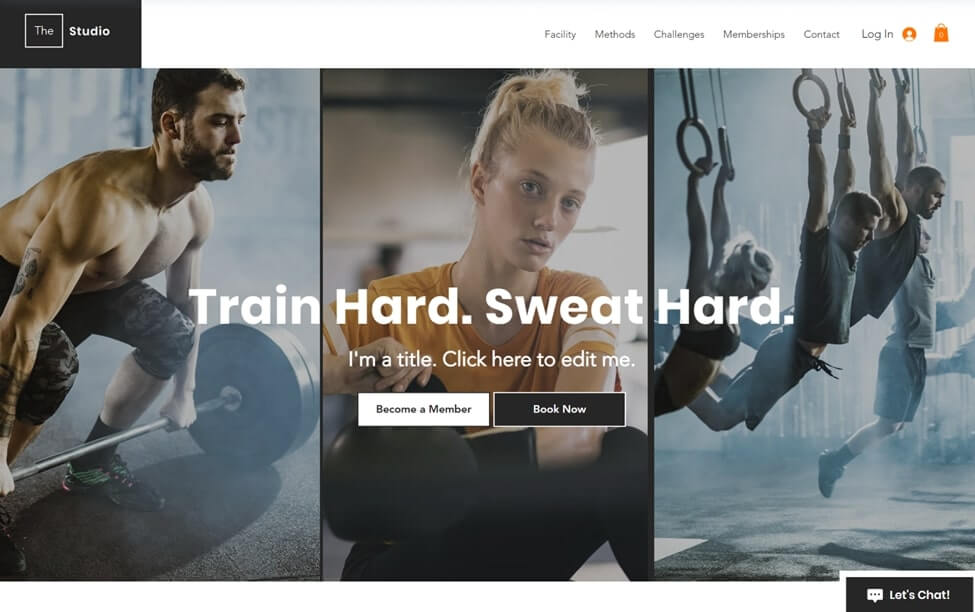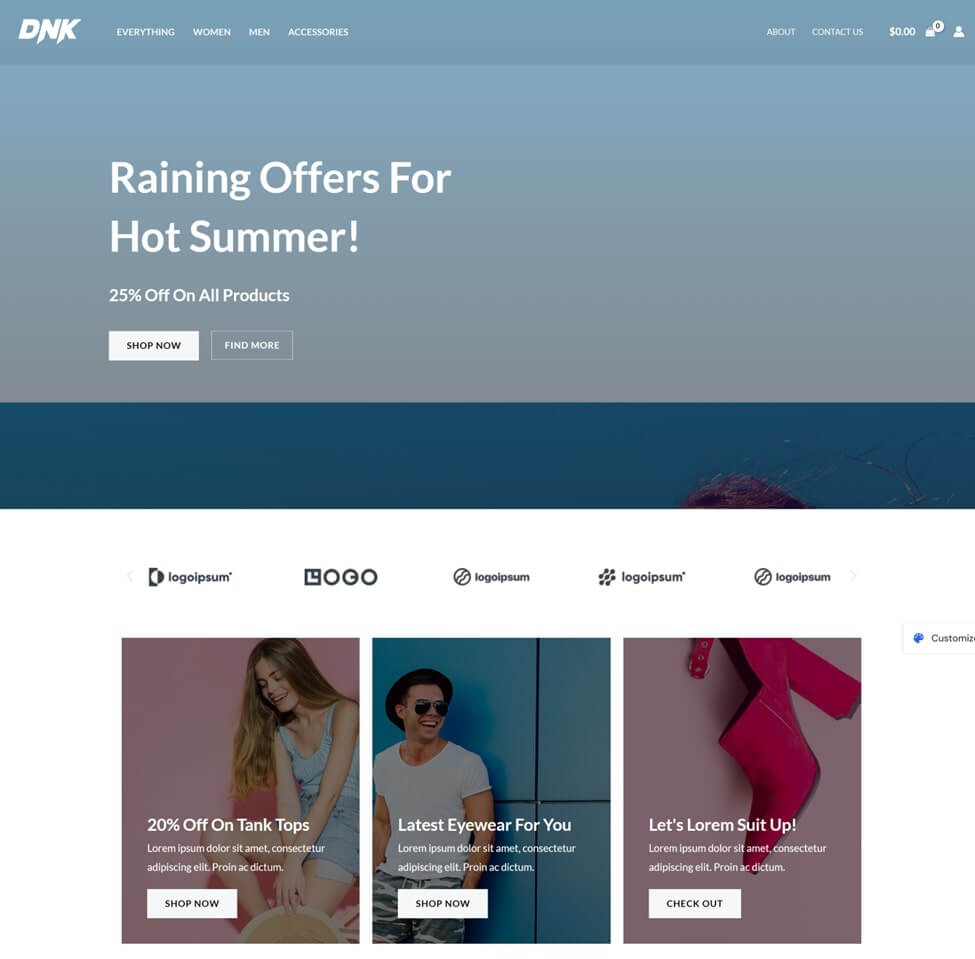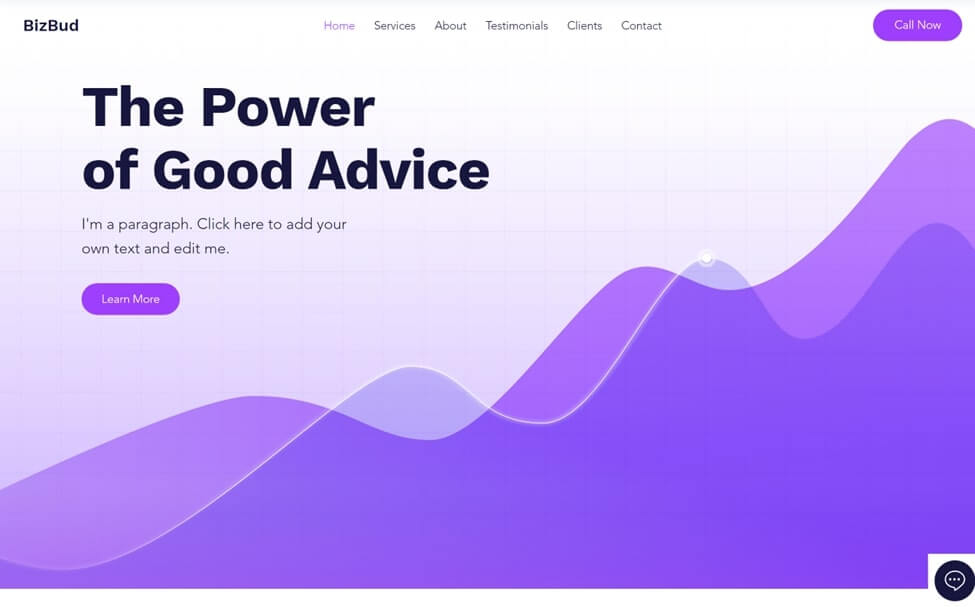In the current era of technology, establishing an online presence is essential. It’s vital for anyone from a small enterprise to a creative individual or someone aiming to start a blog. A thoughtfully crafted website can significantly boost your profile, authenticity, and audience. Nevertheless, the expense associated with developing and sustaining a website may be prohibitive for some. This guide aims to lead you through the process of creating a website economically. We’ll delve into budget-friendly options that cater to a variety of endeavors, including service-based enterprises, professional showcases, blogging, and versatile websites.
The journey to launch a website can be affordable and straightforward. Today, an array of platforms and instruments are accessible that enable the building of a refined and operative site without straining your finances. There’s a wealth of resources – from complimentary themes and plugins, to economical hosting services and integrated SEO features – all designed to minimize costs while maximizing value.
Throughout this guide, we’ll simplify the task of crafting an inexpensive website, addressing different categories: service businesses, portfolios, blogs, and multipurpose platforms. For each category, we will recommend specific platforms and templates, identify key functionalities, and offer tips on how to save money, ensuring your website fulfills its purpose at minimal cost.
By the conclusion of this manual, you will possess the necessary insights to employ diverse platforms and tools in constructing a compelling and visually appealing website economically. Let’s embark on this journey together!
Building websites for service industries
A professional, accessible website is essential for service-oriented companies. It must instill confidence and dependability, offering prospective customers all the details they need regarding what you provide. Thankfully, you can create such a site without spending a fortune. This section will guide you through various platform options, top template picks, crucial functionalities, and economical strategies for establishing a compelling online presence for your service enterprise.
Platform suggestions
WordPress – Powerful & scalable option for your business
Known for its flexibility and scalability, WordPress is a popular choice for service businesses. It offers a vast array of themes and plugins, many of which are free, allowing you to customize your site to fit your business needs. WordPress also gives you full control over your site’s code, which means you can make any changes you want.
WordPress is an open-source content management software (CMS) which can we installed into any web server at now cost www.wordpress.org, popular service hosting providers are BlueHost, WPEngine, and many others.
WordPress also provides their own native hosting+CMS bundle option which includes the most optimized WordPress site setup at a monthly cost – www.wordpress.com.
However, WordPress can be challenging to set up and maintain, especially for beginners. You will need to purchase your own domain name and hosting plan, which can cost anywhere from $5 to $20 per month. You will also need to update your site regularly to keep it secure and functional. WordPress may require some technical skills or external assistance to get the most out of it using third-party plugins and maintaining their compatibility over time with the overall site structure. While WordPress powers the majority of websites currently available online, it requires the integration of various plugins to enable most advanced functions such as ecommerce (WooCommerce). As your business grows WordPress is the must industry known solution in case you need any technical assistance in the future.
Squarespace – Perfect option to get your boutique off the ground
Squarespace is user-friendly platform which comes with a variety of sleek, industry-praised, and professional templates. It’s an all-in-one platform that handles hosting, design, and content management, making it a convenient choice for small business owners. Squarespace also offers easy to use, integrated features such as online booking, email marketing, and analytics to help you grow your service business without the need for additional plugin setup or configuration.
However, Squarespace can be more expensive than other platforms, ranging from $12 to $40 per month. Additional features such as email marketing, or appointment booking require additional fees. Squarespace also has limited customization options and fewer third-party integrations than WordPress or Wix. Squarespace may not suit your needs if you want more creative control beyond industry essentials or advanced functionality which are not already included within the platform. Over the years this closed-source approach has proven to be extremely convenient for many businesses and individuals resulting in high-quality presentable sites, and the support for third-party add-ons has improved.
Wix – The creative and fun option for service businesses
Wix is another excellent option for service businesses. It features an intuitive drag-and-drop builder, a wide selection of templates, and built-in SEO tools to help your website rank well in search engines. Wix also has a variety of apps and widgets that you can add to your site, such as contact forms, testimonials, and online payments. Wix is suitable for service businesses that want a simple and affordable way to create a website without coding. However, Wix also has some drawbacks, such as limited storage and bandwidth, less flexibility than WordPress, and difficulty in switching templates once you’ve chosen one. Wix plans range from $14 to $49 per month, depending on the features you need. One area where clients often struggle while building Wix websites is the mobile optimization, while the drag-and-drop interface makes it a breeze to convert your creative ideas from paper to website, it does require separate mobile optimization review which tends not to be as much of a struggle with the other aforementioned platforms.
Template recommendations
For service businesses, it’s essential to choose templates that look professional and cater specifically to your industry. Here are some key characteristics to look for in templates, as well as some examples of templates that meet these criteria:
Professional Design: Choose clean and modern templates that reflect the professionalism of your services. Avoid cluttered or outdated designs that might distract from your message. For example, the Squarespace template Sawyer has a minimalist and elegant design that showcases your services in a sleek way. It also uses a consistent color scheme and font style that create a harmonious and sophisticated look.
Service-Oriented Layout: Opt for templates that highlight your services prominently, making it easy for visitors to understand what you offer. Use clear headings, bullet points, and icons to display your services in an organized and appealing way. For example, the Wix template Fitness Studio has a service-oriented layout that features your services on the homepage, along with testimonials and a call to action. It also uses a grid layout and a sticky menu that make it easy to navigate and find information.
Responsive Design: Ensure the template is mobile-friendly, as many users will access your site from their phones or tablets. Check how the template looks and functions on different devices and browsers, and make sure it adapts to different screen sizes and orientations. For example, the WordPress template Astra is a responsive and lightweight template that works well on mobile devices. It also has a fast loading speed and a customizable header and footer that enhance the user experience.
Call to Action: Include a clear and compelling call to action that invites visitors to take the next step, whether it’s booking a consultation, requesting a quote, or signing up for a newsletter. Make sure the call to action is visible and easy to access, and use a contrasting color and font size to make it stand out. For example, Wix’s Business Consulting Company template has a call to action button in the top right corner of the sticky menu bar as well as a sticky chat call to action button in the bottom right corner following the user as they scroll through the website.
Must-have features
- Contact Form: Make it easy for potential clients to get in touch with you. A contact form should be straightforward and accessible from multiple pages on your site.
- Service Descriptions: Clearly outline the services you offer. Use separate pages or sections for detailed descriptions, benefits, and pricing.
- Testimonials: Showcase testimonials from satisfied clients to build trust and credibility. Positive reviews can significantly influence potential clients’ decisions.
- Portfolio: Display examples of your previous work to demonstrate your expertise and quality. Use images, videos, or case studies to showcase your projects and results.
- About Us: Introduce yourself and your team to potential clients. Share your story, values, and credentials to create a personal connection and establish credibility.
- FAQ: Answer frequently asked questions to provide more information and address common concerns. This can save you time and increase conversions.
- Social Media Icons: Connect with your audience on social media platforms. Social media icons should be visible and linked to your profiles. This can help you increase your reach, engagement, and brand awareness.
- Business Location and Credentials: If applicable, provide your physical address and a map to help clients find you. Also, display any relevant credentials, such as licenses, certifications, awards, or memberships, to boost your credibility and professionalism.
- Newsletter Sign-Up Form: Integrate a newsletter sign-up form into your website in order to gather emails from visitors and keep the conversation going. If possible, offer something in return to email subscribers such as an immediate discount code or a downloadable lead generator PDF in order to incentivize them to sign up to your newsletter.
Cost-effective tips
- Utilize Free Themes: WordPress, Squarespace, and Wix all offer free themes that are professional and highly customizable. Start with a free theme and upgrade later if needed.
- Leverage Free Plugins: Enhance your website’s functionality with free plugins. For example, use plugins for SEO optimization, contact forms, and social media integration. In case of Squarespace which might change extra to use their integrated email marketing features, think outside the box and sign up for a third-party email marketing platforms such as MailChimp or Constant Contact which can easily be connected to SquareSpace.
- Built-In SEO Tools: Take advantage of the SEO tools provided by these platforms. These tools can help improve your search engine ranking without the need for expensive SEO services. All of these tools are built to be easy to use, so do not leave any sections blank, they’re there for a reason and always fill out all SEO sections. Make sure your pages have defined proper page titles, descriptions, images have descriptions and alt texts, and use headlines in hierarchical structure starting with the largest size h1 followed by secondary and tertiary heading sizes (h2, h3, h4, etc.) as you fill out your page with content.
- DIY Approach: If you have the time and willingness to learn, consider building the website yourself using the drag-and-drop features available on these platforms. This can save you significant costs associated with hiring a web developer & designer. Templates are a great starting point but nothing beats a fully customized approach to really make your brand shine.
By selecting the right platform and utilizing the resources available, you can create a professional and functional website for your service business without exceeding your budget. The next sections will delve into similar strategies for portfolios, blogs, and general-purpose websites, ensuring that no matter your needs, there’s a cost-effective solution for you.
Building a website to make your creative portfolio shine
For creative professionals, an online portfolio is essential for showcasing your work and attracting new clients or job opportunities. Your portfolio needs to be visually appealing, easy to navigate, and designed to highlight your best work. Here are some platform suggestions, template recommendations, must-have features, and cost-effective tips to help you build an impressive portfolio without spending a fortune.
Platform suggestions
Adobe Portfolio – Convenient option integrated into your workflow
This platform is ideal for creatives who already use Adobe products. The platform allows creatives who already have the Creative Cloud subscription to create and publish up to 5 portfolio sites. In case you’re not a current subscriber the service is available for $9.99/m with annual subscription. It integrates seamlessly with Adobe Creative Cloud, making it easy to create a stunning portfolio. Adobe Portfolio offers various templates specifically designed for showcasing visual work.
Some of the pros of using Adobe Portfolio are:
- Free for Creative Cloud subscribers: If you already pay for Adobe’s software, you can use Adobe Portfolio at no extra cost. This makes it a very affordable option for creatives who rely on Adobe’s tools.
- Responsive and customizable: Adobe Portfolio templates are responsive, meaning they adapt to different screen sizes and devices. You can also customize your site’s layout, colors, fonts, and domain name.
- Integrated with Adobe Lightroom and Behance: You can easily sync your photos from Adobe Lightroom and your projects from Behance to your portfolio site, saving you time and hassle.
Some of the cons of using Adobe Portfolio are:
- Limited template options: Adobe Portfolio only offers a few templates to choose from, which might limit your creativity and originality. You might also find it hard to stand out from other portfolios using the same templates.
- No e-commerce or blogging features: If you want to sell your work or blog about your process, Adobe Portfolio might not be the best option for you. It does not support e-commerce or blogging functionalities, which might limit your potential income and audience.
- Requires a Creative Cloud subscription: While Adobe Portfolio is free for Creative Cloud subscribers, it is not available for non-subscribers. If you don’t use Adobe’s software, you will have to pay for a subscription to access Adobe Portfolio, which might not be worth it.
Behance – Established platform with a social flair
Also part of the Adobe family, Behance is a popular platform for creatives to display their work and connect with other professionals. It’s a social media platform for creatives, allowing you to share your projects, get feedback, and gain exposure.
Some of the pros of using Behance are:
- It’s free to use and easy to set up: You don’t need to pay anything to create a Behance account and showcase your work. You can also sync your projects with Adobe Portfolio and Adobe apps, making it convenient to update your portfolio.
- It has a large and active community: Behance has millions of users from various creative fields, giving you the opportunity to network, collaborate, and learn from others. You can also join groups, participate in contests, and follow influencers in your niche.
- It can help you find work opportunities: Behance has a job board where you can browse and apply for freelance or full-time gigs. You can also showcase your skills and services on your profile, and get contacted by potential clients or employers.
Some of the cons of using Behance are:
- It’s not very customizable: Unlike WordPress, Behance does not offer much flexibility in terms of design and functionality. You have to use the predefined layouts and features, which might not suit your personal brand or preferences.
- It’s not SEO-friendly: Behance is not optimized for search engines, which means your portfolio might not rank well on Google or other platforms. This could limit your visibility and reach, especially if you rely on organic traffic to generate leads or sales.
- It’s not your own domain: When you create a portfolio on Behance, you get a URL that looks like this: behance.net/yourname. This might not look very professional or memorable, and it does not give you full ownership of your site.
WordPress – Professional solution to portfolios
Known for its flexibility, WordPress is a great choice if you want more control over your portfolio’s design and functionality. With numerous themes and plugins, you can customize your site to perfectly match your style and needs. However, WordPress also has some drawbacks, such as:
- It’s not beginner-friendly: WordPress has a steep learning curve, and you might need some technical skills or external help to set up and manage your site. You also have to deal with updates, security, and backups on your own.
- It’s not free: WordPress itself is free, but you need to pay for a domain name, web hosting, and any premium themes or plugins you want to use. Depending on your choices, this could cost you anywhere from $5 to $50 per month or more.
Dribbble – Platform for the creative community
Known for its vibrant community of designers and creatives, Dribbble is a great choice if you want to showcase your portfolio and get feedback from peers. With Dribbble, you can upload your work as shots (small screenshots of your designs) or stories (full-page images or videos). You can also join groups, participate in challenges, and find job opportunities. However, Dribbble also has some drawbacks, such as:
- It’s invite-only: To upload your work on Dribbble, you need to get an invitation from an existing member. This can be challenging if you don’t have any connections or referrals. You can also apply for a Pro account, which costs $5 per month or $60 per year, and allows you to upload without an invitation.
- It’s not flexible: Dribbble has a limited range of templates and customization options for your portfolio. You can’t change the layout, colors, fonts, or features of your profile page. You also have to follow the format and size requirements for your shots and stories.
Squarespace – Elegant and minimalist option for portfolios
As stated above in the document Squarespace is a good option if you want to create a portfolio that stands out. With Squarespace, you can choose from hundreds of templates which are specifically pre-build for creative professionals. You can also add features like blogs, e-commerce, analytics, and domains.
Wix – The easy-to-use creative portfolio platform
Known for its drag-and-drop functionality and versatility, Wix is a great choice if you want to create a portfolio that suits your needs. You can also add features like blogs, e-commerce, animations, and video backgrounds. However, Wix also has some drawbacks, such as:
- It’s slow: Wix can be slow to load and run, especially if you have a lot of elements and effects on your portfolio. This can affect your user experience and SEO ranking.
- It’s not consistent: Wix can have issues with cross-browser and cross-device compatibility. Your portfolio may not look or work the same on different browsers and devices.
Weebly – Simple & straightforward portfolio website
Known for its simplicity and ease of use, Weebly is a good option if you want to create a portfolio quickly and easily. With Weebly, you can use one of the templates or start from a blank page. You can also add features like blogs, e-commerce, newsletters, and forms. However, Weebly also has some drawbacks, such as:
- It’s limited: Weebly has a limited range of templates and customization options for your portfolio. You may not be able to achieve the look and functionality you want.
- It’s not professional: Weebly can look amateurish and unoriginal compared to other platforms. Your portfolio may not stand out or impress potential clients or employers.
- It’s not cheap: Weebly has plans ranging from $6 to $26 per month, depending on the features and storage you need. You also have to pay extra for some apps and integrations.
Webflow – Tech-savvy and impressive portfolio platform
Known for its powerful and flexible web design tools, Webflow is a good option if you want to create a portfolio that showcases your skills and creativity. With Webflow, you can design your portfolio visually and code-free, using CSS, HTML, and JavaScript. You can also add features like animations, interactions, CMS, and hosting. However, Webflow also has some drawbacks, such as:
- It’s complex: Webflow has a steep learning curve and requires some web design knowledge to use. You may have to spend a lot of time and resources to master the platform and create your portfolio.
- It’s pricey: Webflow is one of the most expensive platforms for portfolios, with plans ranging from $12 to $72 per month. You also have to pay extra for some features and integrations but that gives you close to endless creative possibilities including features such as native ecommerce integration, membership/customer account features and more.
Template recommendations
Choosing the right template for your portfolio can make a big difference in how you showcase your work and attract clients or employers. Here are some tips and tricks to help you find the best template for your needs:
- Showcase Your Work: Your portfolio should highlight your best and most relevant projects. Look for templates that have large and clear image galleries, project pages, and sliders.
- Minimalist Design: A simple and elegant design can enhance your portfolio’s appeal and usability. Avoid clutter and distractions that may take away from your work. Use white space, contrast, and typography to create a visual hierarchy and guide the visitors’ attention.
- Responsive Design: More and more people are browsing the web on mobile devices, so your portfolio should be responsive and adaptable to different screen sizes and orientations.
- Personal Branding: Your portfolio should reflect your personality and style as a creative professional. Use colors, fonts, logos, and icons that match your brand identity. You can also add features like animations, interactions, and hover effects to make your portfolio more engaging and interactive.
Must-have features
- Image Galleries: Your portfolio should feature high-quality images of your work. Use image galleries to organize and display your projects effectively. You can also add captions, descriptions, and links to provide more details about your work.
- Personal Bio: Include a personal bio to tell visitors more about yourself, your background, and your creative process. This helps potential clients or employers connect with you on a personal level. You can also add a professional photo, a resume, and testimonials to enhance your credibility.
- Contact Information: Make it easy for interested parties to get in touch with you. Include a contact form or your email address and links to your social media profiles. You can also add a call to action button or a banner to invite visitors to request a quote for your services.
- Portfolio Filters: Your portfolio should be easy to navigate and filter by different categories, such as skills, industries, or types of projects. This allows visitors to find relevant examples of your work quickly and efficiently.
- Blog: A blog can be a great way to showcase your expertise, share your insights, and generate more traffic to your portfolio. You can write about topics related to your field, your projects, or your inspirations. You can also use your blog to update visitors on your latest news, events, or achievements.
- Request a Quote: Your portfolio should include a dedicated page where visitors can request a quote for your services. You can provide a form where they can specify their needs, budget, and timeline. You can also showcase some of your previous work and rates to give them an idea of what to expect from you.
- Press Photography or EPK Materials: If you are a photographer or a musician, you may want to include some press photography or electronic press kit (EPK) materials in your portfolio. These are professional and promotional materials that can help you land media coverage, gigs, or collaborations. You can include your bio, press releases, photos, videos, audio clips, logos, and contact information.
- Press Coverage and Awards: Your portfolio should also highlight your achievements and recognition in your field. You can create a separate page where you showcase your press coverage, awards, certificates, or badges. This can help you build trust and authority among your audience and potential clients.
Cost-effective tips
- Leverage Free Tiers: Both Adobe Portfolio and Behance offer free options. Adobe Portfolio is included with any Adobe Creative Cloud subscription, and Behance is free to use with optional premium features.
- Utilize Free Themes: If you choose WordPress, start with a free portfolio theme. There are many high-quality free themes designed specifically for showcasing creative work.
- DIY Approach: Building and maintaining your portfolio yourself can save you money. Platforms like Adobe Portfolio, WordPress, Squarespace, Wix are user-friendly, even for those with limited technical skills.
- Optimize Images: Use free tools like TinyPNG to compress your images for the web. This allows you to upload high-resolution portfolio images without sacrificing quality, while keeping the file sizes small for fast website loading. Additionally consider using WEBP file format for images to further take advantage of the most web optimized image formats. If you have electronic press kits (EPKs) or any other PDF files on your website, you can also use platforms like SmallPDF.com to reduce the size of your files without losing clarity and making them easier to access, download, and distribute via email by potential press contact or curators.
Creating a stunning portfolio doesn’t have to be expensive. By choosing the right platform and making smart use of free resources, you can build an impressive online presence that effectively showcases your creative work. Next, we’ll explore cost-effective strategies for building a blog, ensuring you have all the tools you need to succeed online.
Website options for your blogging site
Blogging is a powerful way to share your thoughts, expertise, and stories with a wide audience. Whether you’re a hobbyist or looking to build a professional blog, having a well-designed website is crucial. Here are some platform suggestions, template recommendations, must-have features, and cost-effective tips to help you start a blog without spending too much.
Platform suggestions
WordPress – the original blogging-oriented content management platform
As one of the most popular blogging platforms, WordPress offers a high degree of flexibility and customization. It has thousands of themes and plugins to help you create a blog that stands out. WordPress is suitable for both individuals and businesses who want to have full control over their blog’s appearance and functionality. WordPress also works well for bloggers who want to monetize their blog, grow their audience, and increase their engagement.
Some of the essential plugins to consider when building a blog using WordPress are:
- Yoast SEO: This plugin helps you optimize your blog for search engines, by providing you with tools and suggestions to improve your content, keywords, titles, meta descriptions, and more. Yoast SEO also helps you generate XML sitemaps, connect your blog to Google Search Console, and monitor your site’s performance and analytics.
- Jetpack: This plugin enhances your blog’s security, speed, and design. It also provides you with features such as social media sharing, email subscriptions, related posts, spam protection, backups, and more. Jetpack also helps you monetize your blog by displaying ads and accepting payments.
- Elementor: This plugin allows you to create and customize your blog’s layout and design using a drag-and-drop interface. You can choose from hundreds of templates and widgets, or create your own from scratch. Elementor also integrates with other plugins and tools, such as WooCommerce, Mailchimp, and Zapier.
- WPForms: This plugin helps you create and manage forms on your blog, such as contact forms, feedback forms, surveys, polls, and more. You can easily build and embed forms on your blog using a drag-and-drop builder, and customize them to match your brand and style. WPForms also helps you collect and store form submissions, and integrate them with other services, such as PayPal, Stripe, and Mailchimp.
- OneSignal: This plugin helps you increase your blog’s engagement and retention by sending push notifications to your subscribers whenever you publish a new post or update. You can also segment your subscribers based on their interests, location, behavior, and more, and send them personalized and targeted messages. OneSignal also helps you track and analyze your push notification performance and optimize your campaigns.
Medium – blogging made easy & social
Medium is known for its simplicity and built-in audience. It’s a great option if you want to focus solely on writing without worrying about design and maintenance. Medium has a clean and minimalist layout that showcases your content. You can also join various publications and communities to reach more readers and earn money from your posts. However, Medium also has some limitations. You don’t have much control over your blog’s branding and customization. You also have to follow Medium’s rules and policies, which may change over time. Medium is free to use, but you can also join the Medium Partner Program for $5 per month to access more features and earn revenue from your posts.
Blogger – the former king of blogging sites
Owned by Google, Blogger is an easy-to-use platform that integrates well with other Google services. It’s a good choice for beginners due to its simplicity and free hosting. You can also choose from a variety of templates and customize them to some extent. However, Blogger also has some drawbacks. It has fewer features and plugins than WordPress, which limits your blog’s functionality and growth potential. It also has less support and updates than other platforms. You don’t have much control over your blog’s domain name, unless you purchase a custom one for about $10 per year. Blogger is free to use, but it may not be the best option for more advanced or professional bloggers who want more flexibility and scalability.
Write.as – platform for privacy and anonymity
Write.as is a platform that focuses on privacy and simplicity. It lets you write anonymously or under a pseudonym, without requiring any personal information or registration. It also has a distraction-free editor that helps you write with clarity and focus. Write.as is ideal for bloggers who value their privacy and want to write without any ads or trackers. However, Write.as also has some limitations. It has very few customization options and features, which may not suit bloggers who want to create a unique and engaging website. It also has a smaller audience than other platforms, which may affect your blog’s visibility and reach. Write.as is free to use for up to 10 blogs, but you can also upgrade to a Pro plan for $6 per month or $60 per year to access more features and benefits.
Squarespace – sleek and minimal blogging
Squarespace is suitable for bloggers who want to create a stunning and elegant website without much coding or technical skills. However, Squarespace also has some drawbacks. It has fewer themes and plugins than WordPress, which may limit your blog’s functionality and variety. It also has a higher price than other platforms, which may not be affordable for some bloggers.
Wix – when blogging requires a creative touch
Wix is suitable for bloggers who want to have a lot of control and options over their website’s creation and management. However, Wix also has some drawbacks. It has a lower loading speed and a less SEO-friendly structure than other platforms, which may affect your blog’s ranking and user experience. It also has a higher price than other platforms, which may not be budget-friendly for some bloggers.
Tumblr – social media for bloggers
Tumblr is a platform that combines blogging and social media. It allows you to create short-form posts, such as text, photos, videos, audio, and links, and share them with other users. It also has a variety of themes and customization options that help you express your personality and style. Tumblr is ideal for bloggers who want to create a casual and fun website that connects with a large and active community. However, Tumblr also has some limitations. It has less control and ownership over your content, which may be deleted or censored by Tumblr or other users. It also has less features and plugins than other platforms, which may not suit bloggers who want to create a more professional and functional website. Tumblr is free to use, but you can also purchase a custom domain name for about $10 per year.
Template recommendations
For blogs, the design should enhance readability and make it easy for visitors to engage with your content. Here’s what to look for in a template:
- Clean and Readable Design: Choose templates that prioritize content with clean lines, plenty of white space, and readable fonts.
- Content-Focused Layout: Opt for templates that showcase your blog posts prominently. Features like featured posts, recent posts, and categorized content can help highlight your writing.
- Responsive Design: Ensure the template is mobile-friendly so readers can enjoy your content on any device.
- Push Notifications: Enable push notifications to alert readers of new posts and updates. This can help increase traffic and engagement.
- Email Notifications: Set up email notifications to send newsletters and updates to your subscribers. This can help build loyalty and trust.
- Social Media Integration: Integrate your blog with your social media accounts. This can help you reach a wider audience and grow your following.
Must-have features
- Social Sharing: Make it easy for readers to share your posts on social media. Include social sharing buttons on your blog posts. This can help you increase your exposure and attract new readers. You can also use plugins or widgets to display your social media profiles and followers on your blog.
- Comments Section: Allow readers to leave comments and engage with your content. This can help build a community around your blog and encourage repeat visits. You can moderate your comments and reply to them to show your appreciation and interact with your audience. You can also use plugins or widgets to enable features like email notifications, comment likes, and threaded replies.
- Categories/Tags: Organize your content with categories and tags to help readers find related posts and navigate your blog more easily. Categories are broad topics that define your blog’s niche, while tags are more specific keywords that describe your posts. You can use plugins or widgets to display your categories and tags on your blog’s sidebar or footer.
- Push Notifications: Keep your readers updated with the latest posts and news from your blog. You can use plugins or widgets to send push notifications to your readers’ browsers or mobile devices. This can help you boost your traffic and engagement. You can also customize your push notifications with images, icons, and call-to-actions.
- Email Subscriptions: Grow your email list and connect with your readers via email. Provide weekly top story summaries or monthly recaps of best performing posts.
- Dark and Light Reading Mode: Improve your readers’ experience and accessibility by offering a dark and light reading mode option on your blog. You can use plugins or widgets to add a toggle switch to your blog’s header or footer that allows readers to switch between dark and light themes. This can help you cater to different preferences and reduce eye strain.
- Monetization Platforms: Generate income from your blog by integrating with monetization platforms. You can use plugins or widgets to add ads, sponsored posts, affiliate links, donations, memberships, or online courses to your blog. You can also use analytics tools to track your revenue and performance. Integrate ads using platforms such as Google Adsense to display various Google ads on your site and early revenue.
- Author Bio Pages and Sections: Showcase your personality and credibility by creating author bio pages and sections on your blog. You can use plugins or widgets to add an author bio box to each post that displays your name, photo, bio, and social media links. You can also create a separate author page that showcases your portfolio, testimonials, and contact details.
- Similar Posts or Suggested Posts Section: Increase your page views and retention by adding a similar posts or suggested posts section to your blog. This can help you showcase your other relevant or popular posts and encourage readers to explore more of your content. You can use plugins or widgets to display your similar posts or suggested posts on your blog’s sidebar, footer, or below each post.
Cost-effective tips for bloggers
- Start with Free Hosting Options: If you’re just starting, consider using free hosting options available on platforms like WordPress.com and Blogger. This can save you money until you’re ready to invest in a custom domain and hosting. You can also use these platforms to test your blog idea and validate your niche.
- Consider Medium for Built-In Audience: Medium is a great option for bloggers who want to focus on writing and reach readers without spending on hosting and design. You can also use Medium to repurpose your existing blog posts and drive traffic back to your site.
- Use Free Themes: There are many free themes available that are designed for blogging. Start with a free theme and customize it to suit your brand and content. As your blog grows, you can consider premium themes for more features and customization options.
- Leverage Free Plugins: If you choose WordPress, there are numerous free plugins that can enhance your blog’s functionality. Use plugins for SEO, social sharing, and analytics to improve your blog without additional costs. You can also use plugins to add monetization features, such as ads, affiliate links, or memberships.
- Build Readership & Collect Contacts: Create database of your viewers, collect their emails, and track social media activity on your page so you have leverage once you’re ready to upgrade to a more advanced hosting platform and want to make sure that the transfer from one platform to another wouldn’t take a hit in your visitorship. Any direct contacts can help you avoid drop in visitorship and provide and immediate boost once you’re fully upgraded to a standalone or more advanced platform as your viewership and business grows.
Starting a blog doesn’t have to be expensive. By choosing the right platform and making smart use of free resources, you can create a professional and engaging blog that attracts readers and grows over time. In the next section, we’ll discuss cost-effective strategies for building general-purpose websites, ensuring you have all the tools you need for any type of online presence.
General one-fits-all website building options
When it comes to creating a general-purpose website, flexibility and scalability are key. Whether you’re building a personal website, a community site, or an informational hub, you need a platform that can grow with your needs. Here are some platform suggestions, template recommendations, must-have features, and cost-effective tips to help you build a versatile website without breaking the bank.
Platform suggestions
Wix – High flexibility platform
A user-friendly platform with a wide range of templates and customization options. Ideal for beginners and visual-oriented users. Free plan available, but with ads and limitations. Paid plans from $14 to $49 per month.
Squarespace – Award-winning templates with flexible user interface
A beautifully designed platform with an intuitive interface and e-commerce features. An all-in-one solution that includes hosting, design, and content management. No free plan, but a 14-day trial. Paid plans from $12 to $40 per month.
WordPress – Platform that powers majority of websites
A highly flexible and scalable platform with countless themes and plugins. The most popular and widely supported platform, with plenty of resources and help online. Free to use, but requires hosting, domain, and premium add-ons. Cost varies depending on needs, but typically from $5 to $25 per month.
Webflow – No-code website building powerhouse
A powerful platform that combines the ease of drag-and-drop design with the functionality of code. Allows you to create responsive and dynamic websites without coding. Offers hosting, CMS, and e-commerce features. Free plan available, but with limited projects and pages. Paid plans from $12 to $36 per month.
Drupal – Open-source legacy
A robust and secure platform that offers advanced features and functionality. Suitable for complex and large-scale websites that require custom development. Requires technical skills and knowledge to use. Free to use, but requires hosting, domain, and premium add-ons. Cost varies depending on needs, but typically from $10 to $50 per month.
Joomla – Open-source pioneer
A flexible and user-friendly platform that offers many features and extensions. Similar to WordPress, but with more built-in functionality and less reliance on plugins. Requires some technical skills and knowledge to use. Free to use, but requires hosting, domain, and premium add-ons. Cost varies depending on needs, but typically from $5 to $20 per month.
GoDaddy – Conveniently accessible at a low price
A popular and reliable platform that offers hosting, domain, and website builder services. Provides a simple and fast way to create a website with pre-made templates and an easy editor. Limited in customization and functionality compared to other platforms. No free plan, but a 30-day trial. Paid plans from $10 to $25 per month.
Hostinger – Budget-friendly alternative
A budget-friendly platform that offers hosting, domain, and website builder services. Provides a basic and straightforward way to create a website with templates and a drag-and-drop editor. Limited in customization and functionality compared to other platforms. No free plan, but a 30-day money-back guarantee. Paid plans from $1.39 to $9.99 per month.
Carrd – Platform for your one-page-pitch websites
A minimalist and modern platform that allows you to create simple and elegant one-page websites. Ideal for personal, portfolio, landing page, or resume websites. Offers a free plan with limited features and a Carrd-branded domain. Paid plans from $9 to $49 per year.
Canva website builder – Familiar solution to DIY creatives
A creative and fun platform that lets you create stunning websites using Canva’s design tools and templates. Ideal for graphic-oriented and artistic websites. Offers a free plan with limited features and a Canva-branded domain. Paid plans from $10 to $30 per month.
Site123 – Easy as ABC to get started
A simple and easy platform that helps you create a website in three steps: choose a template, customize it, and publish it. Ideal for small and simple websites. Offers a free plan with limited features and a Site123-branded domain. Paid plans from $12.80 to $28.80 per month.
Template recommendations
For general-purpose websites, you’ll want templates that are highly customizable and adaptable to various needs:
- General-Purpose Templates: Look for templates that offer a versatile design, allowing you to tailor them to different types of content and functionality.
- Customizable Layouts: Choose templates with flexible layouts that you can easily modify to fit your specific needs.
- Responsive Design: Ensure the template is mobile-friendly so your website looks great on all devices.
Must-have features
The must-have features for a general-purpose website will depend on its specific use case. However, here are some versatile features to consider:
- Easy Navigation: A well-organized menu and intuitive navigation structure are crucial for any website, helping visitors find the information they need quickly.
- Content Management System (CMS): A robust CMS will make it easier to manage and update your website content. WordPress, Wix, and Squarespace all offer excellent CMS capabilities.
- Scalability: Ensure the platform you choose allows for easy addition of new features and pages as your website grows.
Cost-effective tips
- Focus on Scalability: Start with a basic website that meets your immediate needs, but choose a platform that allows for easy expansion. This way, you can add features and functionality as your budget allows.
- Utilize Free Resources: Begin with free themes and plugins available on platforms like WordPress. These can provide a solid foundation without additional costs.
- DIY Approach: If you have the time and willingness to learn, consider building and maintaining the website yourself. Platforms like Wix and Squarespace are designed to be user-friendly, even for those with limited technical skills.
- Plan for Growth: Choose a platform and template that can grow with your website. Investing in a scalable solution now can save you money and effort in the long run, as you won’t need to rebuild your site from scratch as your needs evolve.
Creating a general-purpose website that can adapt to various needs doesn’t have to be expensive. By selecting the right platform and utilizing cost-effective resources, you can build a versatile and professional website that serves your purposes now and in the future.
Essential tools for any website
Besides choosing a platform and a template, you also need to install some tools that will help you monitor and optimize your website performance. These include:
- Google Analytics: This is a free tool that tracks and reports your website traffic, conversions, user behavior, and more. You can use it to understand how visitors interact with your site, what content they prefer, where they come from, and how you can improve their experience.
- Google Search Console: This is another free tool that helps you measure and improve your site’s visibility on Google Search. You can use it to check your site’s health, fix issues, submit sitemaps, analyze keywords, and optimize your SEO.
- Meta Pixel: This is a piece of code that you place on your website to track the actions of your visitors, such as viewing a page, clicking a button, or making a purchase. You can use it to create custom audiences, run remarketing campaigns, and measure the effectiveness of your ads. It is essential for the future when you might be ready to work with an advertising agency to run social media campaigns across any Meta platforms such as Facebook or Instagram.
Complete website price & feature comparison
| Platform | Pricing | Features | Cons | Pros |
| WordPress | $0 – $45 per month (cost highly depends on the hosting provider)
WordPress CMS available for free (server hosting required) |
Customizable themes
Large plugins library eCommerce support (via WooCommerce) Superior SEO Tools Blogging Oriented Media library |
Requires technical skills
Security and maintenance required Hosting, performance and domain costs depend on the hosting provider |
Flexible, powerful, and scalable
Large community Open source Corporate-friendly option |
| Wix | $0 – $500 per month | Drag-and-drop builder
Easy to use templates Apps Marketplace Integrated eCommerce SEO tools Media library Integrated photo editing tools Integrated analytics |
Limited customization
Ads on free plan Slow loading, performance challenges Difficult to migrate to or from other platforms Additional mobile optimization necessary Complex to change templates |
Easy to get started
Intuitive interface Creative freedom All-in-one solution Free plan available |
| Squarespace | $12 – $40 per month | Beautiful templates
Flux drag-and-drop page layout editor Drag-and-drop builder Native eCommerce integration Native SEO tools Media Library Integrated photo editing tools Integrated analytics |
Limited flexibility
Expensive No app store No free plan |
Elegant
Professional Simple to use High-quality service Reliable performance Integrated ecommerce, shipping & emailing tools |
| Webflow | $0 – $212 per month | Visual editor
Fully customizable templates Large community of indie developers Large community of free website layout assets Built-in CMS & editor support Integrated eCommerce Integrated membership/accounts feature for gated content Integrated file convert engine for all files to be converted to .webp format SEO Tools Native hosting Advanced animations engine |
Steep learning curve
Some templates are expensive Expensive hosting Limited support for third party apps Requires web design knowledge |
Innovative platform
High levels for responsive design optimization Dynamic CMS modules Full creative control Superior hosting performance Advanced support for animations, and 3D integrations Large community Free tools available from independent studios File optimization tools |
| Site123 | $0 – $28 per month | Templates
Drag-and-drop builder eCommerce Media Library Integrated analytics |
Basic design
Limited customization Ads on free plan No app store |
Easy to get started
Quick interface Beginner-friendly Free plan available |
| Canva website builder | $0 – $30 per month | Templates
Drag-and-drop builder Graphics Media Hosting Domain |
No eCommerc
No SEO No blogging Limited features Basic design |
Free, fun, easy
Creative Ideal for landing pages |
| Carrd | $0 – $19 per year | Templates
Drag-and-drop builder Hosting Domain |
No eCommerc
No SEO No blogging Limited features Only for one-page sites |
Cheap, simple, easy, fast
Ideal for landing pages |
| Hostinger | $0.99 – $27.99 per month | Hosting, domain, templates
Drag-and-drop builder eCommerce THIS WordPress support |
Requires technical skills
Security and maintenance issues Limited features |
Affordable, reliable, scalable, flexible
WordPress-friendly |
| GoDaddy | $10 – $25 per month | Templates
Drag-and-drop builder Hosting, domain eCommerce SEO, media Integrated analytics |
Limited customization
No app store Difficult to migrate |
Easy, fast, convenient
All-in-one solution Good support |
| Drupal | $0 – $20 per month | Customizable themes
Modules eCommerce THIS Blogging Media library |
Requires technical skills
Security and maintenance issues Hosting and domain costs |
Powerful, scalable, secure
Open source Large community |
| Joomla | $0 – $20 per month | Customizable themes
Extensions eCommerce THIS Blogging oriented Media library |
Requires technical skills
Security and maintenance required Hosting and domain costs |
Flexible, robust, scalable
Open source Large community |
| Adobe Portfolio | $9.99 per month | Templates
Drag-and-drop builder Hosting Domain Media library Integrated analytics |
No eCommerce
No SEO No blogging, limited features Only for portfolios |
Professional, elegant, simple, easy
Integrated with Adobe Creative Cloud |
| Weebly | $0 – $26 per month | Templates
Drag-and-drop builder Hosting Domain eCommerce SEO, media Integrated analytics |
Limited customization
Ads on free plan Slow loading Difficult to migrate |
Easy, intuitive, beginner-friendly builder
All-in-one solution Free plan available |
In this guide, we’ve explored various cost-effective strategies for building different types of websites, from service businesses and portfolios to blogs and general-purpose sites. By leveraging free tools, choosing the right platforms, and focusing on essential features, you can create a powerful online presence without exceeding your budget. For more detailed, step-by-step instructions, be sure to check out the accompanying PDF guide. Happy building!


















